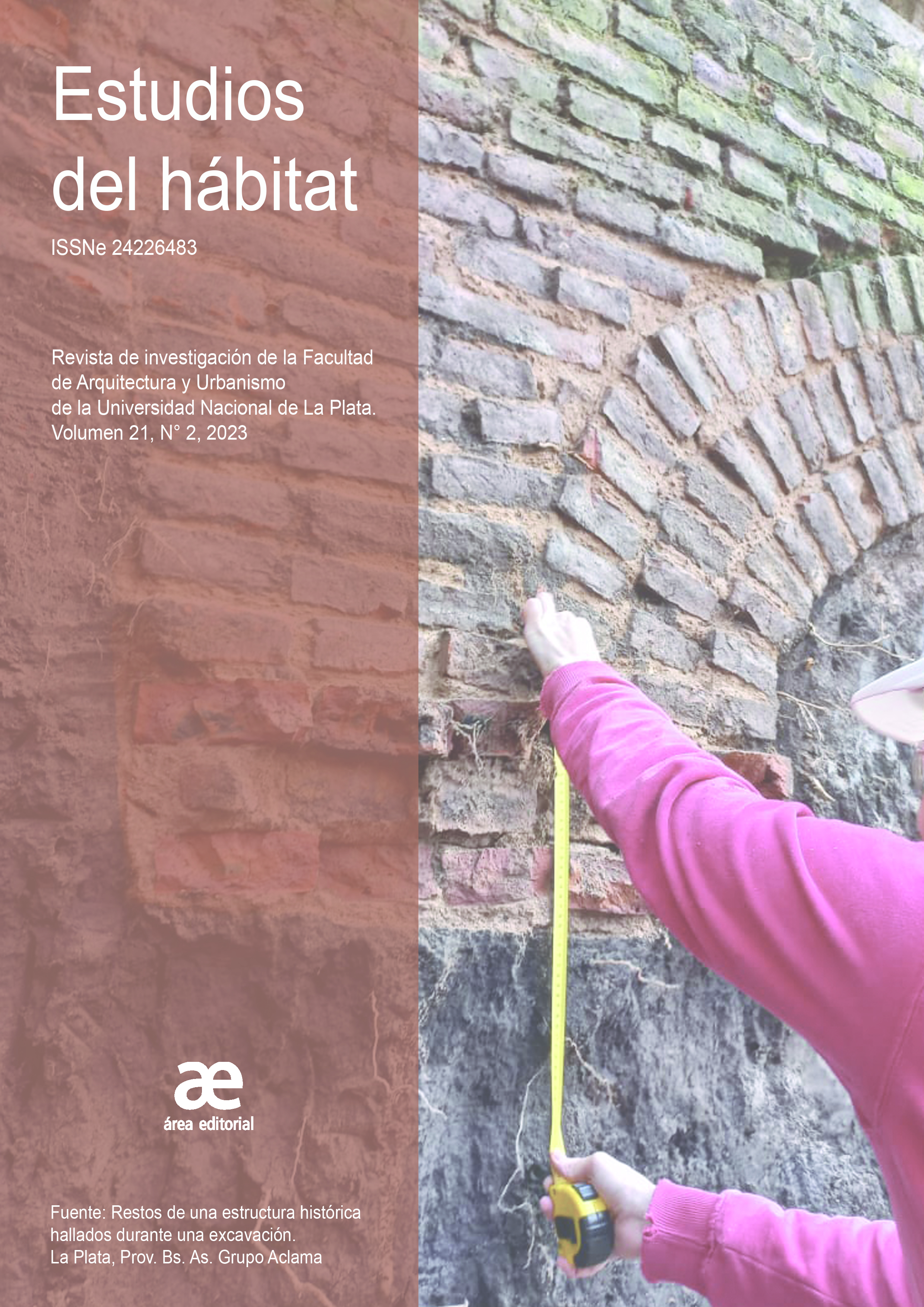Climatic analysis of the Alto Valle de Río Negro for the implementation of bioclimatic design strategies
DOI:
https://doi.org/10.24215/24226483e132Keywords:
climate, bioclimatic design, architecture, thermal confort, climatic databaseAbstract
Climate change, the energy crisis and energy poverty invite us to rethink the role of buildings in providing comfort in interior spaces. This study is applied to the region of the Alto Valle de Río Negro, Argentine, where 15 cities are located along an 88-kilometer valley, in a cold temperate climate, with warm summers, where we expect to determine the most suitable bioclimatic design strategies for achieving hygrothermal comfort decoupled from the consumption of non-renewable energy. Given the lack of open climate records, the feasibility of using remotely sensed data estimated by the MERRA-2 satellite is analyzed. Furthermore, we evaluate the possibility of unifying the same strategies throughout the region. The results show that it is acceptable to use this database given the good affinity between the estimated satellite data and the existing empirical records; as well as we observed high similarity between the climatic variables compared in a sample of 4 of the 15 cities in the region. By generating an EPW climate file for the area, and representing it in the Givoni diagram, we noticed that the most effective strategies are internal thermal gains, high thermal inertia with night discharge, and direct solar gain. This is the first work that carries out a detailed climatic description of the Alto Valle de Río Negro for application purposes for bioclimatic architectural design strategies.
Downloads
Metrics
References
Andrade, H. N., Nunes, A. B. y Teixeira, M. S. (2022). South Atlantic explosive cyclones in 2014-2015: Study employing NCEP2 and MERRA-2 reanalyses. Anais da Academia Brasileira de Ciências, 94. https://doi.org/10.1590/0001-3765202220200797
Ascione, F., Bianco, N., De Masi, R. F., Mauro, G. M. y Vanoli, G. P. (2017). Chapter 19—Cost-Effective Refurbishment of Italian Historic Buildings. En F. Pacheco-Torgal, C.-G. Granqvist, B. P. Jelle, G. P. Vanoli, N. Bianco y J. Kurnitski (Eds.), Cost-Effective Energy Efficient Building Retrofitting (pp. 553-600). Woodhead Publishing. https://doi.org/10.1016/B978-0-08-101128-7.00019-8
ASHRAE. (2004). ANSI/ASHRAE Standard 55-2004 Thermal Environmental Conditions for Human Occupancy. ANSI.
de Dear, R. y Brager, G. S. (1998). Developing an adaptive model of thermal comfort and preference. https://escholarship.org/uc/item/4qq2p9c6
Hernandez Pezzi, C. (2010). Un vitruvio ecológico principios y práctica del proyecto arquitectónico sostenible. Gustavo Gili.
IRAM. (1996). IRAM 11603 Acondicionamiento térmico de edificios Clasificación bioambiental de la República Argentina.
IRAM. (2012). IRAM 11603 Acondicionamiento térmico de edificios Clasificación bioambiental de la República Argentina.
Liggett, R. y Milne, M. (2008). Climate consultant (Versión 6) [JAVA]. UCLA.
Olgyay, V., Frontado, J. y Clavet, L. (1998). Arquitectura y clima: Manual de diseño bioclimático para arquitectos y urbanistas (Primera edición, décima tirada (impresión digital. Gustavo Gili.
Peel, M. C., Finlayson, B. L. y McMahon, T. A. (2007). Updated world map of the Köppen-Geiger climate classification. Hydrology and Earth System Sciences, 11(5), 1633-1644. https://doi.org/10.5194/hess-11-1633-2007
Richardson, D. B. y Andrews, R. W. (2014). Validation of the MERRA dataset for solar PV applications. 2014 IEEE 40th Photovoltaic Specialist Conference (PVSC), 0809-0814. https://doi.org/10.1109/PVSC.2014.6925039
Rodriguez, A. y Muñoz, A. (2022). Variabilidad agroclimática en el Alto Valle de Río Negro y Neuquén. INTA.
Rosales, J. S., Bravo, I., Turraca, D., Bocco, M. y Sayago, S. (19-30 de octubre de 2020). Evaluación de datos obtenidos del producto MERRA-2 (NASA) con estaciones meteorológicas de las provincias de Catamarca y La Rioja (Argentina) para estimar temperaturas en zonas nogaleras. 49JAIIO - CAI Congreso Argentino de Agroinformática, CABA, Argentina.
Servicio Meteorológico Nacional. (2010). Estadísticas Climatológicas Normales—Período 1981-2010. Servicio Meteorológico Nacional. Datos abiertos. https://www.smn.gob.ar/descarga-de-datos
Servicio Meteorológico Nacional. (2020). Estadísticas Climatológicas Normales—Período 1991-2020. Servicio Meteorológico Nacional. Datos abiertos. https://www.smn.gob.ar/descarga-de-datos
U.S. Department of Energy. (2015). M&V guidelines: Measurement and verification for Federal Energy Projects Version 4.0. Federal Energy Management Program.
Wright, D., Cook, J., Andrejko, D. A., Wolters, G. J. y Wright, D. (2008). The passive solar primer: Sustainable architecture. Schiffer Pub.
Downloads
Published
How to Cite
Issue
Section
License
Copyright (c) 2024 María de la Paz Diulio, Analia Fernanda Gómez

This work is licensed under a Creative Commons Attribution-NonCommercial-ShareAlike 4.0 International License.
Acorde a estos términos, el material se puede compartir (copiar y redistribuir en cualquier medio o formato) y adaptar (remezclar, transformar y crear a partir del material otra obra), siempre que a) se cite la autoría y la fuente original de su publicación (revista y URL de la obra), b) no se use para fines comerciales y c) se mantengan los mismos términos de la licencia.








.jpg)

















